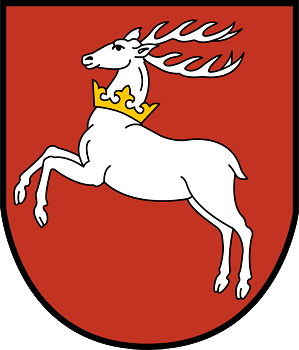Styria (Austria)
Cooperation based on the Agreement between the Lubelskie Voivodeship and Styria dated 21 January 2010
Area: approx. 16,401 km²
Population: over 1.2 million
Capital: Graz (288,806 inhabitants)
Styria (Steiermark) is one of the nine biggest federal states (Bundesland) of Austria. It lies in the southern part of the country and borders Slovenia and 5 other regions: Burgenlandem, Lower Austria, Upper Austria, Salzburg and Carinthia. In terms of area, Styria is the second-biggest Austrian region and in terms of population, it is in fourth place. Administratively, the region is divided into 16 districts and 542 municipalities.
The capital of Styria is Graz, situated on the Mur river. Its name derives from the Slovenian word “Gradec” meaning “small castle”. The greatest attractions of the city are: ruins of the Schlossberg castle with two preserved towers, a Gothic cathedral, seventeenth-century armoury, the Art House in Graz, and numerous museums with the most famous being the Joanneum Universal Museum. In 2003, Graz held the title European Capital of Culture. The most famous residents of Graz are Johannes Kepler (mathematician), and Arnold Schwarzenegger (actor).
Styria is called “The Green heart of Austria” since more than 61% of its area is covered by forests, national parks and other green areas. Styria’s landscape also includes the Alps – constituting two-thirds of the area of Austria – as well as numerous lakes. The main tourist attractions in the region are: Spa&Wellness, city tourism, summer and winter sports, wine and cuisine. The characteristic regional product is, among others, pumpkin seed oil.
The main economic sectors in the region include the wood and automotive industries as well as an ecotechnology sector. An important and still developing industry on the Austrian market is the sector of new technologies. The region is home to companies such as Magna Steyr AG & Co KG, Infineon Technologies, AVL Company, Siemens, Andritz AG.
With universities such as the Karl Franzen University, Technical University, Medical Academy and Fine Arts Academy (all of them based in Graz) Styria boasts a rich educational offer. The region cooperates with various regions in 14 countries of Europe and Asia. The cooperation is developed in the field of economy, science, education, culture, tourism, ecology, social policy, and technology. The international foreign policy of Styria focuses mainly on joint projects, namely in the area of the EU, establishing partnerships, experience exchange, activity of the Styria Office in Brussels as well as political lobbying and membership in international organisations.
The cooperation agreement between the Lubelskie Voivodeship and Styria was signed on 21 January 2010; however, the cooperation was initiated as early as in the beginning of 2003. The main element of Polish-Austrian interregional cooperation was an exchange of experience carried out in the form of business meetings, conferences, and workshops. The cooperation includes fields such as environmental protection, renewable energy, culture, science, agriculture, and regional products.
An important element in Lublin – Styrian contacts is the Austrian Black-Cross – an organisation dealing with taking care of war cemeteries, creating dignified memorials to the war victims of all nations and religions. Thanks to this activity, and support in this area by the Lubelskie Voivodeship, many war cemeteries and graves dating from the period of the First World War have been restored
As of 18 October 2016, the Honorary Consulate of the Republic of Austria has been operating in Lublin. Thanks to its activity and engagement, the consulate creates and supports cooperation between Lubelskie and Styria.













 Oficjalny portal województwa lubelskiego prowadzony przez Urząd Marszałkowski Województwa Lubelskiego
Oficjalny portal województwa lubelskiego prowadzony przez Urząd Marszałkowski Województwa Lubelskiego